Why Norfolk is the frontline of the UK's battle with climate change
Entire East Anglian villages could be lost by 2050 – bolder environmental action is desperately needed from the government.
Happisburgh is falling into the sea.
In recent decades, this small coastal village in north Norfolk (pronounced hayes-bruh) has become best known for devastating coastal erosion. Thanks to ruthless tidal conditions, the North Sea has swallowed up dozens of houses, with clifftops crumbling onto the sandy beach below and residents forced to abandon their homes.
Since 1994, the coast has retreated more than 150 metres inland, and future projections are depressing, with some scientists predicting the village of 1,400 people will be entirely lost by 2050.
Climate change skeptics will point to the fact that coastal erosion in north Norfolk predates the Industrial Revolution (which is correct). However, experts agree that rising sea levels and changing tidal conditions have significantly worsened things. And this is just one of many pressing environmental issues facing Norfolk. The East Anglian county is an under-examined frontline in the UK’s battle to live with climate change, and mitigate its most dangerous excesses.
“There are a lot fewer facilities in the village now,” says Sarah Greenwood, who grew up in Happisburgh and plays a key role in the Save Happisburgh Campaign (which attempts to raise funds and research schemes to slow down erosion). “There used to be two well-stocked village shops, three pubs… my first job at 14 was in the tea shop on the cliffs, and that has gone now. It's painful.”
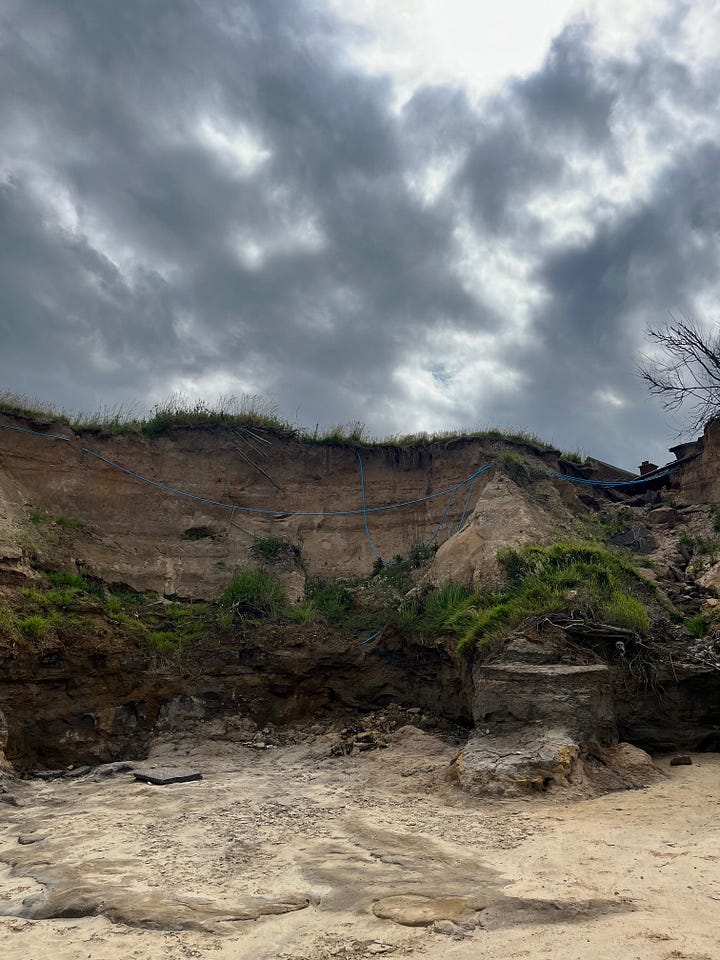
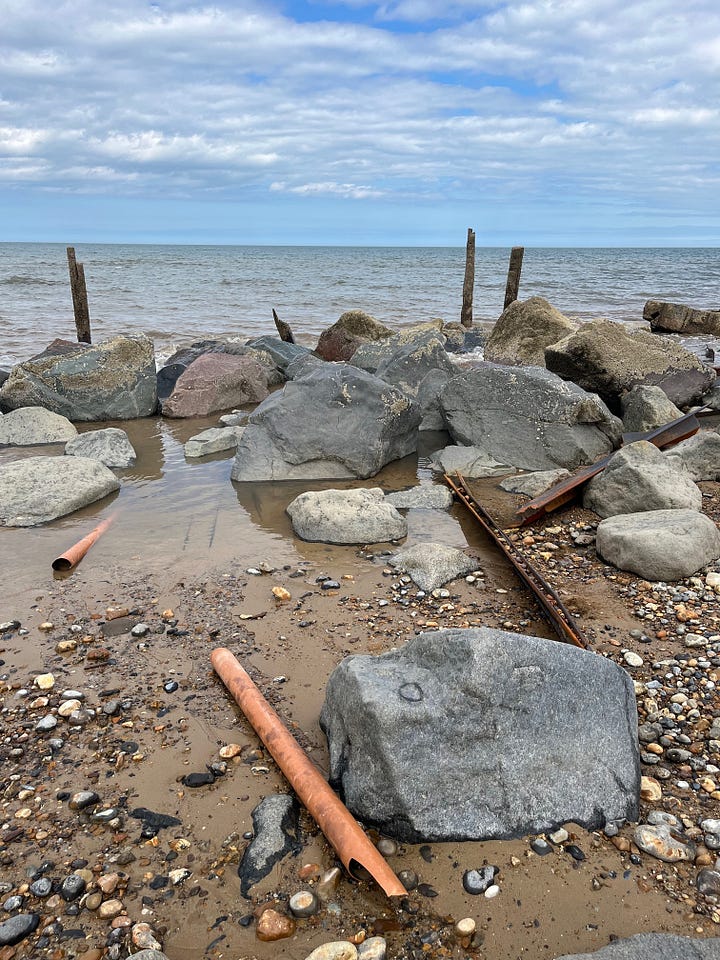
Sarah notes that it’s “really difficult to separate that change from the general social change that’s been happening over the last 30 years,” with Norfolk’s ageing population, limited job opportunities, and decreasing school numbers. But erosion is undoubtedly a crucial factor behind the village’s transformation.
“We have to accept we’re not going to get hard defences, we’re not going to stop the erosion completely, but we can slow it down and give the community time to adjust to what’s happening,” says Greenwood.
“We could do that by putting in soft defences, putting more rocks in on the beach… but also having a financial mechanism to protect people on the coast,” for example, a compensation and relocation scheme for affected residents.
The impact of “climate distress”
Many locals have been frustrated by the lack of joined-up thinking along this stretch of coastline, caused by local authority boundaries and disagreements over the best way to tackle erosion. In a sign of just how exposed and helpless local residents are feeling, mental health charity Norfolk and Waveney Mind recently set up the sUStain initiative to provide a range of support around “climate distress” with a focus on “eco-anxiety and climate grief”.
“They’ve given up on Happisburgh,” says James Allen* (name changed), a resident of the adjacent village of Walcott. “We’ve been here since 2016, and since then, the caravan site has gone completely. You can see the old blue water pipes sticking out of the cliff face, and concrete from the site on the beach below.”
Pointing out Walcott-based coastal defences put in place in recent years, he adds: “A Dutch company came in and did the sandscaping, which was an impressive operation, and things have been better since then.” This £19m sandscaping project has reduced the risks of erosion in nearby Walcott and Bacton, but Happisburgh’s struggles continue.
Steff Aquarone, the Liberal Democrat MP elected to represent North Norfolk last summer, is pushing for the creation of a dedicated Coastal Communities Minister, tasked with protecting the concerns of those who live in coastal communities across the UK (roughly 1/3 of the population).
Environmental change is at the heart of this push: Aquarone believes this new minister could help direct greater resources and representation for places like Happisburgh that are facing a rapidly changing climate head-on.
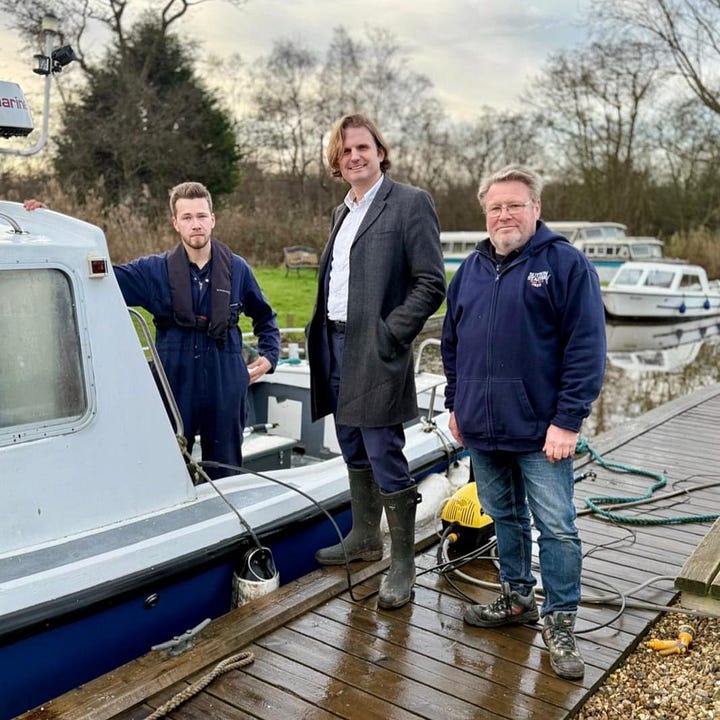
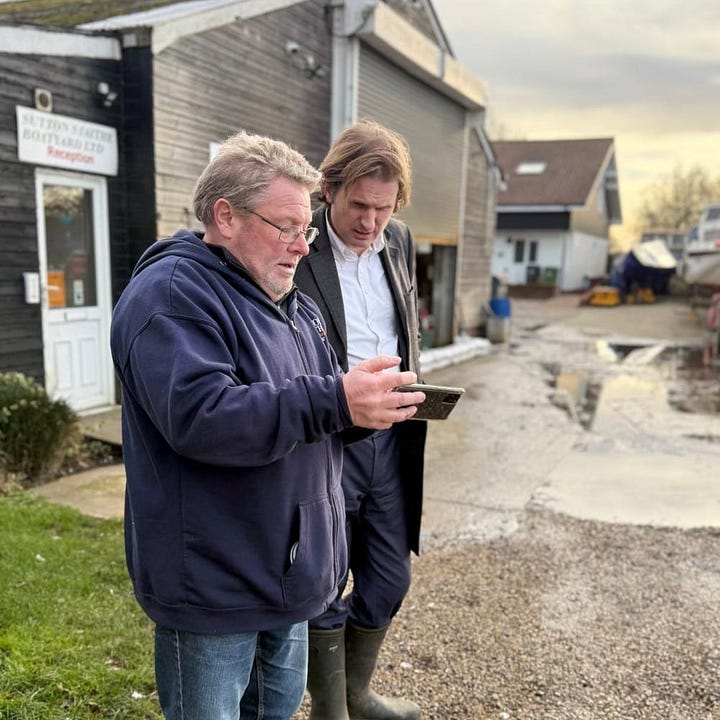
“Given the current structure of government, the only way to get something done is to put someone with an agenda at the top table,” he tells The Lead. “Somebody who can understand the issues that coastal communities face, and advocate for the other secretaries of state to understand, consider, and support the changes we want.”
A recent backbench debate saw Aquarone’s plan gain support from across the political spectrum. While Green MP Sian Berry pushed for public ownership of the water industry, decrying the “appalling state of our sea water [with] sewage overflows off the south coast on a regular basis”, Reform UK's Richard Tice focused instead on complaining about the “thousands of pylons moving electricity from one place to another,” proposing we “put these cables underground to protect our beautiful coastal communities.”
Regardless of their exact diagnosis of the issues at hand, most people realise coastal communities are struggling after decades of under-investment and lack of political attention. For those living in areas most affected by climate change, there’s no choice but to adapt to the present realities.
Finding funding for change
Another pressing concern for people in North Norfolk is water pollution, which, thanks to the tireless work of campaigners, has become an important national issue (with 84 per cent of Brits concerned about the health of UK waterways).
Pressure groups and politicians continue to campaign hard for the building of upgraded water treatment facilities following the revelation that Anglian Water dumped untreated wastewater into rivers and seas in the east of England for almost 500,000 hours in 2024 (a 64 per cent increase on 2023). It's an issue that rightly angers people of all political stripes.
“You don't have to be an eco-extremist to be upset about sewage being put in the sea,” says Aquarone. “There are people who are passionate and enthusiastic about the environment and worried about the effect on climate change and biodiversity, but also people who don’t care about that stuff, but don’t like seeing the environment they live in destroyed by profiteering companies.”
With no new sewage infrastructure built in decades, it’s estimated Norfolk needs roughly £120m of concrete to build 40 new storm tanks in key areas across the county. It's not an enormous sum of money, and the North Norfolk MP is confident his area will receive investment. But evidently, more needs to be done to protect this region and others like it from the damage caused by climate change.
Inland flooding is another critical issue that becomes increasingly risky when coastal defences are damaged. Norfolk's extremely flat landscapes increase the amount of damage caused to potential flood zones, and local MPs like Mid Norfolk's George Freeman have called for action on this issue. However, securing adequate funding has proved difficult.
Advocates say the creation of a coastal communities minister would bring greater attention to some of the country’s most isolated towns and villages, and ensure pressure for upgraded water treatment facilities and coastal defences is maintained.
Beyond this, more research into new sea defence technologies is needed, and when it comes to facing coastal change the UK would do well to take further inspiration from the water management prowess of the Dutch.
Ultimately, the problems facing Norfolk can be pinned on a persistent failure to build infrastructure for the future. In this county and elsewhere across the UK, bold, innovative action is critical to protect the future of communities bearing the brunt of climate change.■
About the author: Fred Garratt-Stanley is a freelance journalist who writes about culture, politics, football, and pubs. He's based in London and has written for a wide range of publications including The Lead, The Guardian, NME, Huck, and Pellicle.



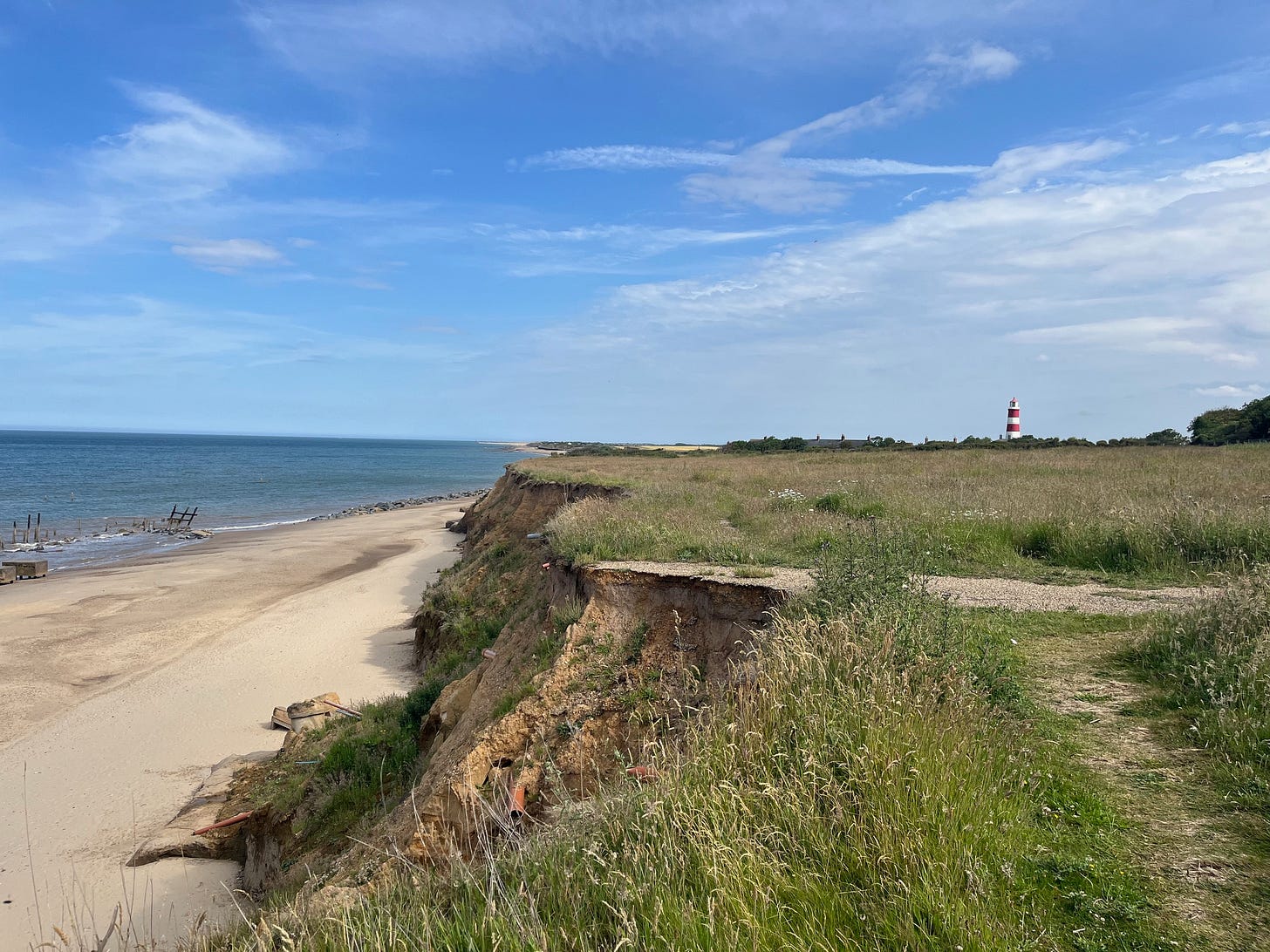
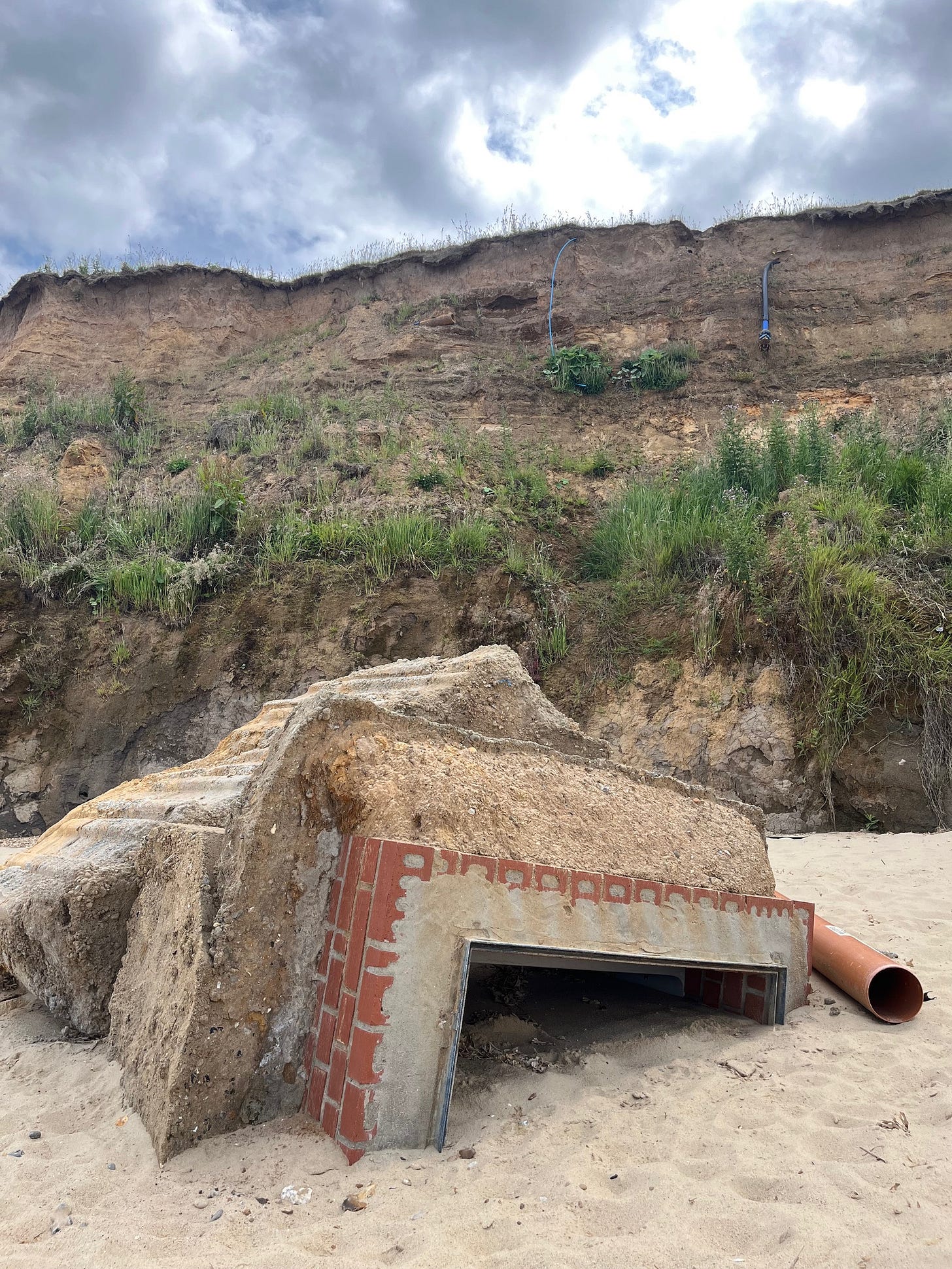
Sadly, economically we may be in a situation with North Norfolk (and similar places) of needing to appreciate two competing concepts/outcomed at the same time.
Yes we absolutely need to do better on environmental matters to reduce the damage.
But likely also need to accept significant managed retreat for cost and also climate change reasons (how much embedded CO2 in building sea defences and other maintenance); maybe with short term financial compensation to support relocation.
In the near future we need to develop standard objective decision making tools (where to invest heavily to defend, where to retreat) and standard retreat protocols (including reinterrment of graves) that deliver the environmentally best possible outcomes: e.g. retreat while increasing biodiversity, including potentially useful agriculture/fishery and related byproducts: maybe reedbeds, low intensity sheep grazing for meat; salt panning; samphire. And eco tourism.